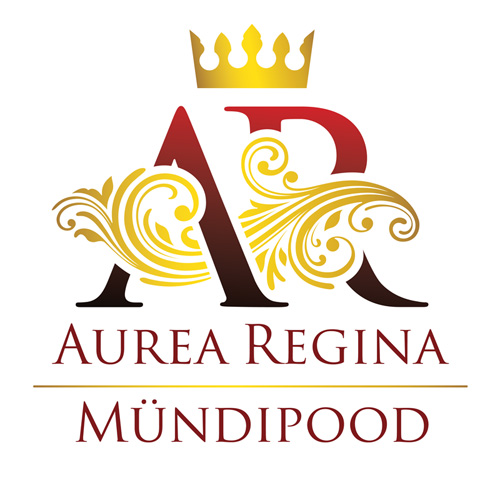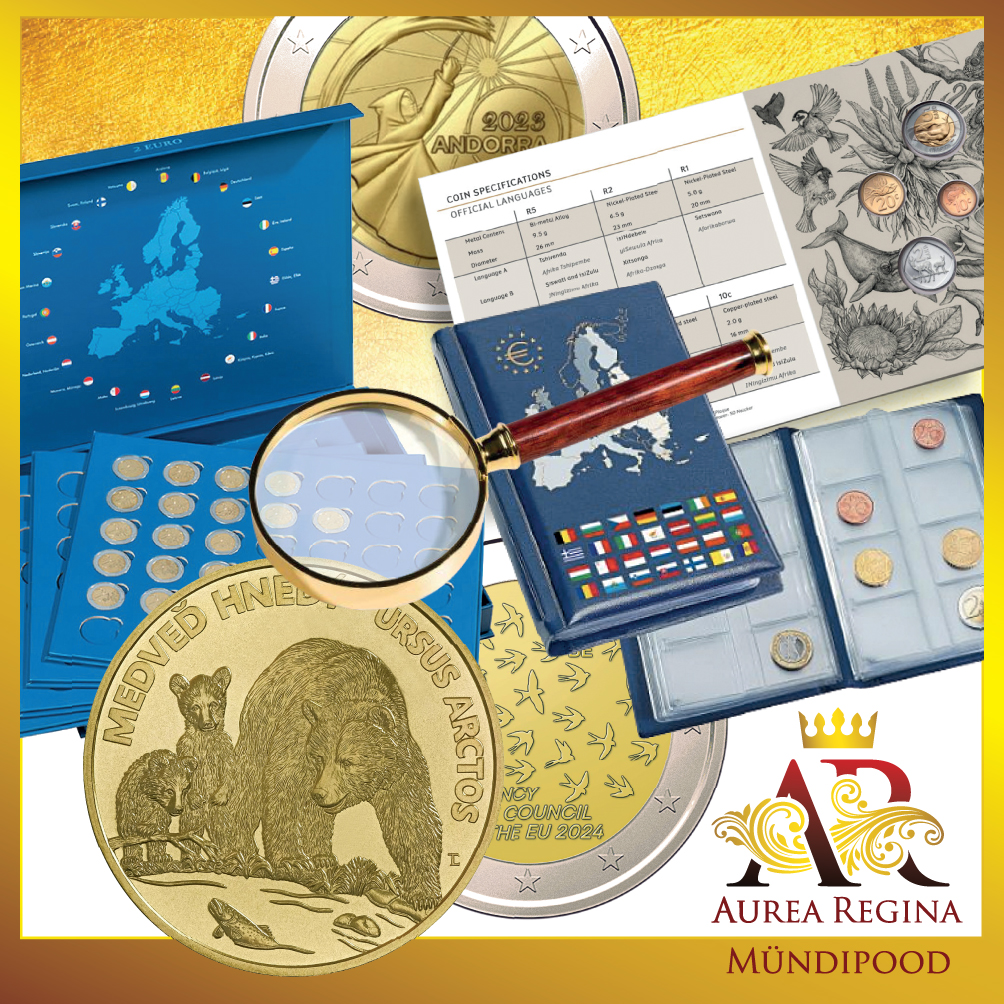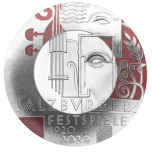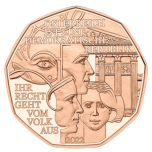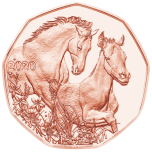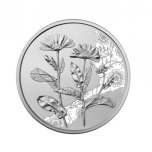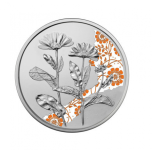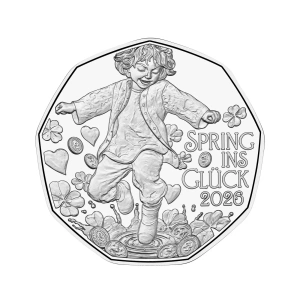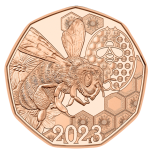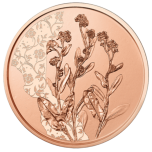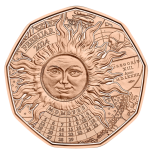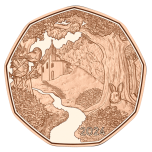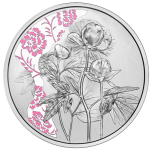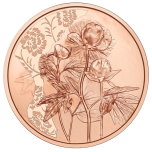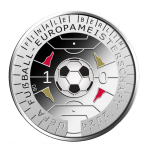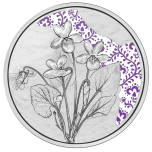Austrian Mint
Sort By:
Display: as list / as grid
Date of Issue 22 January 2020
Quality Proof
Face Value: 20 Euro
Coin Design: Mag. Helmut Andexlinger
Diameter: 34.00 mm
Silver: 92,5%
Total Weight 22.42 g
Packaging Comes in a case complete with a numbered certificate of authenticity and protective slipcase
One of the world’s leading opera, theatre and classical music festivals, the Salzburg Festival celebrates its centenary in 2020. Featuring opera, theatre and classical concerts, the Salzburg Festival offers a broader spectrum of cultural variety than any other. To celebrate this major cultural event, which is constantly in the process of reinventing itself, we have come up with a particularly innovative coin design.
On 22 August 1920, the director Max Reinhardt staged Hugo von Hofmannsthal’s morality play Jedermann in Salzburg’s Domplatz (Cathedral Square) for the first time and in doing so
founded the Salzburg Festival. Since 1926, the play has been a permanent feature of the festival programme, a tradition interrupted only during the Nazi regime. Those who stage or direct Jedermann in Salzburg’s Domplatz have reached the pinnacle of their career.
In addition to Max Reinhardt and Hugo von Hofmannsthal, the composer Richard Strauss was also involved in the founding of this magnificent celebration of the performing arts, which did not take long to become established and achieve world renown. At Salzburg, the best is often not good enough. This gives the festival cultural relevance, which comes from its strength of tradition but also allows new directions to be explored and puts the avant-garde centre stage. This very special centenary coin is avant-garde itself. With an obverse that has the appearance of a plate with a flat inner part, a coin of this type has never been minted before. We believe it does the Salzburg Festival justice.
Quality Proof
Face Value: 20 Euro
Coin Design: Mag. Helmut Andexlinger
Diameter: 34.00 mm
Silver: 92,5%
Total Weight 22.42 g
Packaging Comes in a case complete with a numbered certificate of authenticity and protective slipcase
One of the world’s leading opera, theatre and classical music festivals, the Salzburg Festival celebrates its centenary in 2020. Featuring opera, theatre and classical concerts, the Salzburg Festival offers a broader spectrum of cultural variety than any other. To celebrate this major cultural event, which is constantly in the process of reinventing itself, we have come up with a particularly innovative coin design.
On 22 August 1920, the director Max Reinhardt staged Hugo von Hofmannsthal’s morality play Jedermann in Salzburg’s Domplatz (Cathedral Square) for the first time and in doing so
founded the Salzburg Festival. Since 1926, the play has been a permanent feature of the festival programme, a tradition interrupted only during the Nazi regime. Those who stage or direct Jedermann in Salzburg’s Domplatz have reached the pinnacle of their career.
In addition to Max Reinhardt and Hugo von Hofmannsthal, the composer Richard Strauss was also involved in the founding of this magnificent celebration of the performing arts, which did not take long to become established and achieve world renown. At Salzburg, the best is often not good enough. This gives the festival cultural relevance, which comes from its strength of tradition but also allows new directions to be explored and puts the avant-garde centre stage. This very special centenary coin is avant-garde itself. With an obverse that has the appearance of a plate with a flat inner part, a coin of this type has never been minted before. We believe it does the Salzburg Festival justice.
89,00 €
Quality: Uncirculated
Face Value: 5 Euro
Diameter: 28,5 mm
Material: Copper
Total Weight: 8,9 g
Mintage: 200 000
A coin the likes of which Austria has never seen before, Democracy is made from copper from the former roof of the Parliament building in Vienna. When you purchase the coin you therefore acquire a little piece of democracy and by spending 5 euros you get something priceless in return.
On the occasion of the reopening of the Parliament building in Vienna, we are issuing this very special coin. The copper it contains originally formed part of the former roof of the building but was removed during the ongoing renovation of the building. By using it to make the copper edition of the Democracy coin, we are making our democratic tradition something tangible. A strong democracy thrives on discourse. Our opinions may differ, but our consensus is democracy. Likewise, fundamental rights and freedoms make a democracy what it is. They enable individual and social freedom and guarantee the co-determination of the individual.
The coin’s reverse features two heads in profile and one full face, which represent the people as sovereign. To the left, we see a watchful eye surrounded by stylised laurel leaves, to the right, we see a section of the Austrian Parliament building in the background. But much more than this, the coin illustrates the spirit from which our nation was born. This is reflected in the Austrian Constitution, where it says: "Austria is a democratic republic. Its law emanates from the people." These wise words appear on the top and bottom edges of the coin.
Face Value: 5 Euro
Diameter: 28,5 mm
Material: Copper
Total Weight: 8,9 g
Mintage: 200 000
A coin the likes of which Austria has never seen before, Democracy is made from copper from the former roof of the Parliament building in Vienna. When you purchase the coin you therefore acquire a little piece of democracy and by spending 5 euros you get something priceless in return.
On the occasion of the reopening of the Parliament building in Vienna, we are issuing this very special coin. The copper it contains originally formed part of the former roof of the building but was removed during the ongoing renovation of the building. By using it to make the copper edition of the Democracy coin, we are making our democratic tradition something tangible. A strong democracy thrives on discourse. Our opinions may differ, but our consensus is democracy. Likewise, fundamental rights and freedoms make a democracy what it is. They enable individual and social freedom and guarantee the co-determination of the individual.
The coin’s reverse features two heads in profile and one full face, which represent the people as sovereign. To the left, we see a watchful eye surrounded by stylised laurel leaves, to the right, we see a section of the Austrian Parliament building in the background. But much more than this, the coin illustrates the spirit from which our nation was born. This is reflected in the Austrian Constitution, where it says: "Austria is a democratic republic. Its law emanates from the people." These wise words appear on the top and bottom edges of the coin.
15,00 €
Quality: Special Uncirculated
Face Value: 5 Euro
Diameter: 28,5 mm
Copper: 99,9%
Total Weight: 8,5 g
Comes without packaging
Few animals have had a bigger impact on humans than the horse. Its power, beauty and sensitivity make the horse one of the most beloved members of the animal kingdom, not least among young female riders, many of whom form a profound and enduring bond with their loyal steed. The Easter Coin 2020 celebrates this unique bond.
From being the subject of countless prehistoric cave paintings, to the leading form of human transport for more than five millennia, the horse has played an unparalleled role in the development of society. The most iconic of all European horse breeds is the Lipizzaner, made world famous through its connection with the Spanish Riding School in Vienna. Originally from Slovenia, the Lipizzaner has been bred since 1920 at the stud farm at Piber in the Austrian province of Styria, where some 40 foals come into the world every year. Within minutes of their birth, new born foals can stand and, though initially unsteady, are soon galloping joyfully across the alpine meadows.
The coin features a foal in the foreground frolicking happily through a meadow while its mother keeps a watchful eye close behind. The lower part of the coin is decorated with an assortment of spring flowers.
Face Value: 5 Euro
Diameter: 28,5 mm
Copper: 99,9%
Total Weight: 8,5 g
Comes without packaging
Few animals have had a bigger impact on humans than the horse. Its power, beauty and sensitivity make the horse one of the most beloved members of the animal kingdom, not least among young female riders, many of whom form a profound and enduring bond with their loyal steed. The Easter Coin 2020 celebrates this unique bond.
From being the subject of countless prehistoric cave paintings, to the leading form of human transport for more than five millennia, the horse has played an unparalleled role in the development of society. The most iconic of all European horse breeds is the Lipizzaner, made world famous through its connection with the Spanish Riding School in Vienna. Originally from Slovenia, the Lipizzaner has been bred since 1920 at the stud farm at Piber in the Austrian province of Styria, where some 40 foals come into the world every year. Within minutes of their birth, new born foals can stand and, though initially unsteady, are soon galloping joyfully across the alpine meadows.
The coin features a foal in the foreground frolicking happily through a meadow while its mother keeps a watchful eye close behind. The lower part of the coin is decorated with an assortment of spring flowers.
15,00 €
Face Value: 10 Euro
Diameter: 32 mm
Silver: 92,5%
Total Weight: 15,56 g
Quality: Uncirculated
Mintage: 30 000
As marigolds turn their heads to follow the trajectory of the sun from east to west, they suggest things are moving forward. Combined with their bright colours, this has led to meanings of joy, gratitude, warmth, affection, peace, protection, contentment and understanding. It’s little wonder that some people refer to the third flower in the Language of Flowers series as ‘the sunshine herb’.
Marigolds encompass numerous plants from entirely different species, the two most common being Calendula and Tagetes. They both belong to the Asteraceae family, are easily mistaken for one another and have many common properties. Conveniently, the two species also have the same basic meanings in the language of flowers, many of which focus on positivity and patience. With their golden hues and positive energy, marigolds are said to bring light into any situation and have the ability to illuminate and guide us when faced with challenges.
Their strong connection with the sun means that marigolds are also associated with heat, passion, sex and love. Apparently, both Calendula and Tagetes can be used in spells relating to passion, creativity and warmth and have also been used in love potions and spells to maintain devotion for the long term. Marigolds also have multiple culinary uses and health benefits, and these cheerful, exceptionally long-flowering and easy-to-grow flowers are perfect for brightening our gardens and homes.
Symbolising positivity, the coin’s obverse shows a young woman with her eyes closed and flowers in her hair enjoying the scent of a marigold. Next to an ornamental side image of a marigold, the reverse of the coin features a pair of marigolds, both of which are imprints of real flowers.
Diameter: 32 mm
Silver: 92,5%
Total Weight: 15,56 g
Quality: Uncirculated
Mintage: 30 000
As marigolds turn their heads to follow the trajectory of the sun from east to west, they suggest things are moving forward. Combined with their bright colours, this has led to meanings of joy, gratitude, warmth, affection, peace, protection, contentment and understanding. It’s little wonder that some people refer to the third flower in the Language of Flowers series as ‘the sunshine herb’.
Marigolds encompass numerous plants from entirely different species, the two most common being Calendula and Tagetes. They both belong to the Asteraceae family, are easily mistaken for one another and have many common properties. Conveniently, the two species also have the same basic meanings in the language of flowers, many of which focus on positivity and patience. With their golden hues and positive energy, marigolds are said to bring light into any situation and have the ability to illuminate and guide us when faced with challenges.
Their strong connection with the sun means that marigolds are also associated with heat, passion, sex and love. Apparently, both Calendula and Tagetes can be used in spells relating to passion, creativity and warmth and have also been used in love potions and spells to maintain devotion for the long term. Marigolds also have multiple culinary uses and health benefits, and these cheerful, exceptionally long-flowering and easy-to-grow flowers are perfect for brightening our gardens and homes.
Symbolising positivity, the coin’s obverse shows a young woman with her eyes closed and flowers in her hair enjoying the scent of a marigold. Next to an ornamental side image of a marigold, the reverse of the coin features a pair of marigolds, both of which are imprints of real flowers.
49,00 €
Face Value: 10 Euro
Diameter: 32 mm
Silver: 92,5%
Total Weight: 15,56 g
Quality: Uncirculated
Mintage: 30 000
As marigolds turn their heads to follow the trajectory of the sun from east to west, they suggest things are moving forward. Combined with their bright colours, this has led to meanings of joy, gratitude, warmth, affection, peace, protection, contentment and understanding. It’s little wonder that some people refer to the third flower in the Language of Flowers series as ‘the sunshine herb’.
Marigolds encompass numerous plants from entirely different species, the two most common being Calendula and Tagetes. They both belong to the Asteraceae family, are easily mistaken for one another and have many common properties. Conveniently, the two species also have the same basic meanings in the language of flowers, many of which focus on positivity and patience. With their golden hues and positive energy, marigolds are said to bring light into any situation and have the ability to illuminate and guide us when faced with challenges.
Their strong connection with the sun means that marigolds are also associated with heat, passion, sex and love. Apparently, both Calendula and Tagetes can be used in spells relating to passion, creativity and warmth and have also been used in love potions and spells to maintain devotion for the long term. Marigolds also have multiple culinary uses and health benefits, and these cheerful, exceptionally long-flowering and easy-to-grow flowers are perfect for brightening our gardens and homes.
Symbolising positivity, the coin’s obverse shows a young woman with her eyes closed and flowers in her hair enjoying the scent of a marigold. Next to an ornamental side image of a marigold, the reverse of the coin features a pair of marigolds, both of which are imprints of real flowers.
Diameter: 32 mm
Silver: 92,5%
Total Weight: 15,56 g
Quality: Uncirculated
Mintage: 30 000
As marigolds turn their heads to follow the trajectory of the sun from east to west, they suggest things are moving forward. Combined with their bright colours, this has led to meanings of joy, gratitude, warmth, affection, peace, protection, contentment and understanding. It’s little wonder that some people refer to the third flower in the Language of Flowers series as ‘the sunshine herb’.
Marigolds encompass numerous plants from entirely different species, the two most common being Calendula and Tagetes. They both belong to the Asteraceae family, are easily mistaken for one another and have many common properties. Conveniently, the two species also have the same basic meanings in the language of flowers, many of which focus on positivity and patience. With their golden hues and positive energy, marigolds are said to bring light into any situation and have the ability to illuminate and guide us when faced with challenges.
Their strong connection with the sun means that marigolds are also associated with heat, passion, sex and love. Apparently, both Calendula and Tagetes can be used in spells relating to passion, creativity and warmth and have also been used in love potions and spells to maintain devotion for the long term. Marigolds also have multiple culinary uses and health benefits, and these cheerful, exceptionally long-flowering and easy-to-grow flowers are perfect for brightening our gardens and homes.
Symbolising positivity, the coin’s obverse shows a young woman with her eyes closed and flowers in her hair enjoying the scent of a marigold. Next to an ornamental side image of a marigold, the reverse of the coin features a pair of marigolds, both of which are imprints of real flowers.
70,00 €
Quality: Special Uncirculated
Face Value: 5 Euro
Diameter: 28,5 mm
Silver: 92,5%
Total Weight: 7,78 g
Jump for Joy, our New Year Coin 2026, is so much more than a charming collector piece. It is also a symbol of confidence and renewal, a thoughtful keepsake for those who need courage, a token of joy for those who celebrate, and a reminder for everyone that a new beginning is always possible.
From plunging into freezing water, soft snow or taking a real or symbolic leap of faith, people all over the world share the desire to start the new year on the right footing – with joy, anticipation and optimism. The leap embodies courage and renewal, the joy of a fresh start, and the quiet confidence that something good awaits once we dare to let go.
Every year, people across the globe watch in awe as the world’s finest ski jumpers launch themselves fearlessly into the air at the New Year ski jumping event in Garmisch-Partenkirchen, Germany. In Italy, many welcome the new year with a plunge into a river or the cold sea, often in costume, always with great spirit. In Greece and Cyprus, the waters are blessed on 6 January, when a priest casts a cross into the sea and young people dive in after it. For whoever retrieves it first, the year ahead promises to be a particularly fortunate one.
On the reverse of Jump for Joy, a child jumps into a puddle of water with joyful abandon. In a playful way, they are learning a lesson they will carry into adulthood, as they move beyond their comfort zone and embrace new adventures. The splashing water droplets turn into four-leaved clovers, hearts and coins – symbols of luck, love and prosperity. The nine-sided coin’s obverse features the coats of arms of the nine federal states of Austria arranged in a circle.
Beautifully crafted in silver, the 5 euro New Year Coin comes in vibrant gift packaging. A mini masterpiece with a major message, it says those who enter the new year with confidence and a smile can look forward to wonderful surprises. Sometimes, happiness is just a leap away.
Face Value: 5 Euro
Diameter: 28,5 mm
Silver: 92,5%
Total Weight: 7,78 g
Jump for Joy, our New Year Coin 2026, is so much more than a charming collector piece. It is also a symbol of confidence and renewal, a thoughtful keepsake for those who need courage, a token of joy for those who celebrate, and a reminder for everyone that a new beginning is always possible.
From plunging into freezing water, soft snow or taking a real or symbolic leap of faith, people all over the world share the desire to start the new year on the right footing – with joy, anticipation and optimism. The leap embodies courage and renewal, the joy of a fresh start, and the quiet confidence that something good awaits once we dare to let go.
Every year, people across the globe watch in awe as the world’s finest ski jumpers launch themselves fearlessly into the air at the New Year ski jumping event in Garmisch-Partenkirchen, Germany. In Italy, many welcome the new year with a plunge into a river or the cold sea, often in costume, always with great spirit. In Greece and Cyprus, the waters are blessed on 6 January, when a priest casts a cross into the sea and young people dive in after it. For whoever retrieves it first, the year ahead promises to be a particularly fortunate one.
On the reverse of Jump for Joy, a child jumps into a puddle of water with joyful abandon. In a playful way, they are learning a lesson they will carry into adulthood, as they move beyond their comfort zone and embrace new adventures. The splashing water droplets turn into four-leaved clovers, hearts and coins – symbols of luck, love and prosperity. The nine-sided coin’s obverse features the coats of arms of the nine federal states of Austria arranged in a circle.
Beautifully crafted in silver, the 5 euro New Year Coin comes in vibrant gift packaging. A mini masterpiece with a major message, it says those who enter the new year with confidence and a smile can look forward to wonderful surprises. Sometimes, happiness is just a leap away.
39,00 €
Quality: Special Uncirculated
Face Value: 5 Euro
Diameter: 28,5 mm
Copper: 99,9%
Total Weight: 8,5 g
Mintage: 50 000
Comes without packaging
Why talk when you can dance instead? That’s how bees communicate. Their ‘waggle dance’ is a wonderful phenomenon and one that not only bees themselves benefit from. Other living creatures, including humans, do so too, because bees are a vital part of our ecosystem: their welfare is our welfare.
In the early 20th century, the unusual behaviour of honeybees piqued the curiosity of behavioural scientist Karl von Frisch (1886–1982), who grew up in Vienna. He was intrigued by the way the insects sometimes move in circles and perform a figure of-eight ‘waggle dance’. In time, von Frisch discovered that when doing so, bees are in fact ‘speaking’ a dance language to the other members of their hive to show them where they can find pollen and nectar. Although originally disputed by other scientists, von Frisch’s theory eventually earned him the Nobel Prize in 1973.
The ‘round dance’, in which bees walks in a circle, turn around, then walk the same circle in the opposite direction, tells watching bees that there are flowers with pollen in the immediate vicinity of the hive. When the food source is further away, the waggle dance tells the watching bees how far it is and in which direction they can find it. A representation of the waggle dance is shown in the background on the coin’s reverse, behind a bee in flight and above a decorative honeycomb deign. The obverse of the nine-sided coin shows the coats of arms of all the provinces of Austria. Not just for nature lovers, whether in copper or silver, Waggle Dance makes for a great spring or Easter gift.
In the early 20th century, the unusual behavior of honey bees piqued the curiosity of behavioral scientist Karl von Frisch (1886–1982), who grew up in Vienna. He was intrigued by the way the insects sometimes move in circles and perform a figure-of-eight ‘waggle dance’. In time, von Frisch discovered that when doing so, bees are in fact ‘speaking’ a dance language to the other members of their hive to show them where they can find pollen and nectar. Although originally disputed by other scientists, von Frisch’s theory eventually earned him the Nobel Prize in 1973 for achievements in comparative behavioural physiology and pioneering work in communication between insects. It is not just bees themselves that benefit from this wonderful phenomenon, as other living creatures, including humans, do so too. Honey bees, wild bees and bumble bees are a vital part of the ecosystem: their welfare is our welfare.
Face Value: 5 Euro
Diameter: 28,5 mm
Copper: 99,9%
Total Weight: 8,5 g
Mintage: 50 000
Comes without packaging
Why talk when you can dance instead? That’s how bees communicate. Their ‘waggle dance’ is a wonderful phenomenon and one that not only bees themselves benefit from. Other living creatures, including humans, do so too, because bees are a vital part of our ecosystem: their welfare is our welfare.
In the early 20th century, the unusual behaviour of honeybees piqued the curiosity of behavioural scientist Karl von Frisch (1886–1982), who grew up in Vienna. He was intrigued by the way the insects sometimes move in circles and perform a figure of-eight ‘waggle dance’. In time, von Frisch discovered that when doing so, bees are in fact ‘speaking’ a dance language to the other members of their hive to show them where they can find pollen and nectar. Although originally disputed by other scientists, von Frisch’s theory eventually earned him the Nobel Prize in 1973.
The ‘round dance’, in which bees walks in a circle, turn around, then walk the same circle in the opposite direction, tells watching bees that there are flowers with pollen in the immediate vicinity of the hive. When the food source is further away, the waggle dance tells the watching bees how far it is and in which direction they can find it. A representation of the waggle dance is shown in the background on the coin’s reverse, behind a bee in flight and above a decorative honeycomb deign. The obverse of the nine-sided coin shows the coats of arms of all the provinces of Austria. Not just for nature lovers, whether in copper or silver, Waggle Dance makes for a great spring or Easter gift.
In the early 20th century, the unusual behavior of honey bees piqued the curiosity of behavioral scientist Karl von Frisch (1886–1982), who grew up in Vienna. He was intrigued by the way the insects sometimes move in circles and perform a figure-of-eight ‘waggle dance’. In time, von Frisch discovered that when doing so, bees are in fact ‘speaking’ a dance language to the other members of their hive to show them where they can find pollen and nectar. Although originally disputed by other scientists, von Frisch’s theory eventually earned him the Nobel Prize in 1973 for achievements in comparative behavioural physiology and pioneering work in communication between insects. It is not just bees themselves that benefit from this wonderful phenomenon, as other living creatures, including humans, do so too. Honey bees, wild bees and bumble bees are a vital part of the ecosystem: their welfare is our welfare.
19,00 €
Quality: Uncirculated
Face Value: 10 Euro
Diameter: 32 mm
Material: Copper
Total Weight: 15 g
Mintage: 130 000
Without capsule
As its name implies, the forget-me-not signifies ‘remember me’ in the language of flowers. But alongside other literal meanings of its common name, the forget-me-not is also a symbol of profound love, remembrance, fidelity and constancy. Giving the flowers at the start of an illicit love affair could be a discreet way to convey a need for trust and confidentiality. Although passionate and romantic love are important elements of their meaning, forget-me-nots can signify deep friendship and familial love as well. In addition, forget-me-nots can be used to convey that the bonds of true love transcend time and space and will continue to exist despite physical separation and even death. Each spring forget-me-nots create a delightful froth of intense blue flowers are a particularly welcome sight when not much else is in bloom. Unlike many other symbolic meanings associated with flowers, those of the forget-me-not have endured – rather like the timeless love and constancy they convey.
Face Value: 10 Euro
Diameter: 32 mm
Material: Copper
Total Weight: 15 g
Mintage: 130 000
Without capsule
As its name implies, the forget-me-not signifies ‘remember me’ in the language of flowers. But alongside other literal meanings of its common name, the forget-me-not is also a symbol of profound love, remembrance, fidelity and constancy. Giving the flowers at the start of an illicit love affair could be a discreet way to convey a need for trust and confidentiality. Although passionate and romantic love are important elements of their meaning, forget-me-nots can signify deep friendship and familial love as well. In addition, forget-me-nots can be used to convey that the bonds of true love transcend time and space and will continue to exist despite physical separation and even death. Each spring forget-me-nots create a delightful froth of intense blue flowers are a particularly welcome sight when not much else is in bloom. Unlike many other symbolic meanings associated with flowers, those of the forget-me-not have endured – rather like the timeless love and constancy they convey.
25,00 €
Quality: Special Uncirculated
Face Value: 5 Euro
Diameter: 28,5 mm
Copper: 99,9%
Total Weight: 8,5 g
Comes without packaging
The New Year Coin 2024 is a special coin for a very special year. With 366 days instead of the usual 365, 2024 is a leap year and this limited-mintage coin is designed to remind you that the extra day should be enjoyed amid the hustle and bustle of everyday life.
The extra day in a leap year keeps the calendar year synchronised with the solar year and thus with the cosmic order. You should accept it as a heavenly gift and treat it as an extra portion of luck. The extra day is a day with great potential on which you can allow yourself a little more ‘me time’, dedicate more time than usual to someone else, or do something you have always wanted to do. Or if you have resolved to tackle something completely new by the end of the year, why not use the extra day for that? Everyday life tends to demand a great deal from us without making any concessions, but that is not the case in 2024 when we are given a whole extra day to enjoy.
The reverse of the nine-sided coin is dedicated to the Gregorian calendar, which was introduced by Pope Gregory XIII in 1582 to bring the calendar back into line with the solar year. Pope Gregory XIII features on the right edge of the coin next to a large, flame-haired human manifestation of the Sun. Below the Sun is the calendar page for the month of February showing the 29th of February – the extra day. At the top is the zodiac sign Pisces, which corresponds to late February. The coin’s obverse shows the coats of arms of the nine provinces of Austria.
Face Value: 5 Euro
Diameter: 28,5 mm
Copper: 99,9%
Total Weight: 8,5 g
Comes without packaging
The New Year Coin 2024 is a special coin for a very special year. With 366 days instead of the usual 365, 2024 is a leap year and this limited-mintage coin is designed to remind you that the extra day should be enjoyed amid the hustle and bustle of everyday life.
The extra day in a leap year keeps the calendar year synchronised with the solar year and thus with the cosmic order. You should accept it as a heavenly gift and treat it as an extra portion of luck. The extra day is a day with great potential on which you can allow yourself a little more ‘me time’, dedicate more time than usual to someone else, or do something you have always wanted to do. Or if you have resolved to tackle something completely new by the end of the year, why not use the extra day for that? Everyday life tends to demand a great deal from us without making any concessions, but that is not the case in 2024 when we are given a whole extra day to enjoy.
The reverse of the nine-sided coin is dedicated to the Gregorian calendar, which was introduced by Pope Gregory XIII in 1582 to bring the calendar back into line with the solar year. Pope Gregory XIII features on the right edge of the coin next to a large, flame-haired human manifestation of the Sun. Below the Sun is the calendar page for the month of February showing the 29th of February – the extra day. At the top is the zodiac sign Pisces, which corresponds to late February. The coin’s obverse shows the coats of arms of the nine provinces of Austria.
15,00 €
Quality: Special Uncirculated
Face Value: 5 Euro
Diameter: 28,5 mm
Copper: 99,9%
Total Weight: 8,5 g
Mintage: 50 000
Comes without packaging
Leave winter behind you with the help of our inspiring spring coin, Getting There. As you walk towards the sun, you become more receptive to the beauty of nature and with each step you get closer to yourself. Walking is so good for us, so why not encourage a friend or loved one to take to the trail with the gift of this great little companion piece and talisman. A gift from the heart, it will give motivate them to set off on a spring stroll for the soul – and if they have lost their bearings, it can help them find their way back. But where does the path lead us? Will it take us even deeper into the forest? Or will it lead us out of it? What lies over the the next ridge? Will the path lead us up the mountain before guiding us safely down into the valley below? The path meanders this way and that, up and down, as if it does not know where it is going itself. It does this out of pure modesty, out of respect for nature and out of cautiousness. It is gentle with those who walk it, too. It draws us forwards, both taking its time and giving us time by inviting us to dawdle, to pause and to marvel. It shows us the world and its big little secrets. The meaning of walking is not only measured by where it leads us. The very act of walking is meaningful in itself, it energises body and mind, and gives direction to the lost and confused. Walking changes those who walk. It helps us see that the path of life is not something irrevocable but part of an ongoing process, a kind of pilgrimage to happiness and contentment. We may not always know exactly where it is taking us, but it gets us there in the end. The path on the coin’s reverse winds its way up to the picturesque Falkenstein church, which is built into the rock in woodland near St Wolfgang in the Salzkammergut region of central Austria. The coats of arms of the nine federal provinces of Austria feature on the coin’s obverse and give the coin its nine-sided shape. Getting There is available in both copper and silver.
Face Value: 5 Euro
Diameter: 28,5 mm
Copper: 99,9%
Total Weight: 8,5 g
Mintage: 50 000
Comes without packaging
Leave winter behind you with the help of our inspiring spring coin, Getting There. As you walk towards the sun, you become more receptive to the beauty of nature and with each step you get closer to yourself. Walking is so good for us, so why not encourage a friend or loved one to take to the trail with the gift of this great little companion piece and talisman. A gift from the heart, it will give motivate them to set off on a spring stroll for the soul – and if they have lost their bearings, it can help them find their way back. But where does the path lead us? Will it take us even deeper into the forest? Or will it lead us out of it? What lies over the the next ridge? Will the path lead us up the mountain before guiding us safely down into the valley below? The path meanders this way and that, up and down, as if it does not know where it is going itself. It does this out of pure modesty, out of respect for nature and out of cautiousness. It is gentle with those who walk it, too. It draws us forwards, both taking its time and giving us time by inviting us to dawdle, to pause and to marvel. It shows us the world and its big little secrets. The meaning of walking is not only measured by where it leads us. The very act of walking is meaningful in itself, it energises body and mind, and gives direction to the lost and confused. Walking changes those who walk. It helps us see that the path of life is not something irrevocable but part of an ongoing process, a kind of pilgrimage to happiness and contentment. We may not always know exactly where it is taking us, but it gets us there in the end. The path on the coin’s reverse winds its way up to the picturesque Falkenstein church, which is built into the rock in woodland near St Wolfgang in the Salzkammergut region of central Austria. The coats of arms of the nine federal provinces of Austria feature on the coin’s obverse and give the coin its nine-sided shape. Getting There is available in both copper and silver.
19,00 €
Face Value: 10 Euro
Quality Proof
Diameter: 32.00 mm
Silver: 92,5%
Total Weight: 15.352 g
In England the peony is sometimes referred to as the ‘rose royale’ and the Chinese word for peony means ‘the most beautiful’. Peonies have been painted by many European artists and the opulent beauty of the peony has long been a popular subject in Chinese and Japanese literature, painting and decoration. A Chinese legend has it that a capricious empress commanded all the flowers in her garden to blossom at the same time. All acquiesced apart from the peony. Annoyed by the flower’s refusal, the empress banished it to the coldest reaches of the empire, yet despite the inhospitable environment, the peony thrived. The empress, duly impressed, allowed the peony to return, declaring it the ‘queen of all flowers’.
Quality Proof
Diameter: 32.00 mm
Silver: 92,5%
Total Weight: 15.352 g
In England the peony is sometimes referred to as the ‘rose royale’ and the Chinese word for peony means ‘the most beautiful’. Peonies have been painted by many European artists and the opulent beauty of the peony has long been a popular subject in Chinese and Japanese literature, painting and decoration. A Chinese legend has it that a capricious empress commanded all the flowers in her garden to blossom at the same time. All acquiesced apart from the peony. Annoyed by the flower’s refusal, the empress banished it to the coldest reaches of the empire, yet despite the inhospitable environment, the peony thrived. The empress, duly impressed, allowed the peony to return, declaring it the ‘queen of all flowers’.
70,00 €
Quality: Uncirculated
Face Value: 10 Euro
Diameter: 32 mm
Material: Copper
Total Weight: 15 g
Mintage: 130 000
Without capsule
In England the peony is sometimes referred to as the ‘rose royale’ and the Chinese word for peony means ‘the most beautiful’. Peonies have been painted by many European artists and the opulent beauty of the peony has long been a popular subject in Chinese and Japanese literature, painting and decoration. A Chinese legend has it that a capricious empress commanded all the flowers in her garden to blossom at the same time. All acquiesced apart from the peony. Annoyed by the flower’s refusal, the empress banished it to the coldest reaches of the empire, yet despite the inhospitable environment, the peony thrived. The empress, duly impressed, allowed the peony to return, declaring it the ‘queen of all flowers’.
Face Value: 10 Euro
Diameter: 32 mm
Material: Copper
Total Weight: 15 g
Mintage: 130 000
Without capsule
In England the peony is sometimes referred to as the ‘rose royale’ and the Chinese word for peony means ‘the most beautiful’. Peonies have been painted by many European artists and the opulent beauty of the peony has long been a popular subject in Chinese and Japanese literature, painting and decoration. A Chinese legend has it that a capricious empress commanded all the flowers in her garden to blossom at the same time. All acquiesced apart from the peony. Annoyed by the flower’s refusal, the empress banished it to the coldest reaches of the empire, yet despite the inhospitable environment, the peony thrived. The empress, duly impressed, allowed the peony to return, declaring it the ‘queen of all flowers’.
25,00 €
Face value: 11 €
Weight: 14 g
Silver: 50%
Diameter: 30 mm
Mintage: 111 111
The reverse of the coin depicts a football and 4 flags sporting the colors of Germany: Red, Yellow and Black. All around the reverse, the inscriptions: "UEFA FUßBALL-EUROPAMEISTERSCHAFT 2024" and "FINALE BERLIN". The obverse of the coin depicts the German Coat of Arms, the imperial eagle, with the inscriptions: "BUNDESREPUBLIK DEUTSCHLAND 2024", "11 EURO" - the face value, and "SILBER 500 A" – the fineness of the Silver.
Weight: 14 g
Silver: 50%
Diameter: 30 mm
Mintage: 111 111
The reverse of the coin depicts a football and 4 flags sporting the colors of Germany: Red, Yellow and Black. All around the reverse, the inscriptions: "UEFA FUßBALL-EUROPAMEISTERSCHAFT 2024" and "FINALE BERLIN". The obverse of the coin depicts the German Coat of Arms, the imperial eagle, with the inscriptions: "BUNDESREPUBLIK DEUTSCHLAND 2024", "11 EURO" - the face value, and "SILBER 500 A" – the fineness of the Silver.
35,00 €
Face Value: 10 Euro
Quality Proof
Diameter: 32.00 mm
Silver: 92,5%
Total Weight: 15.352 g
A delicate little flower with a strong character, the violet signifies faithfulness, loyalty and constancy in the language of flowers and has long been given as a token of love. Like all the coins in The Language of Flowers series, the final coin features an imprint of real flowers that captures violets in their natural state and is faithful to the tiniest detail.
With heart-shaped leaves and tiny, sweetly scented flowers that bloom from late winter to early spring, the violet is sometimes referred to as the ‘flower of modesty’ for the way its flowers hide coyly beneath the plant’s heart-shaped leaves. The association between the colour violet and the bluish-purple colour of the plant is thought to have developed in the late fourteenth century. Although most violets do come in shades of blue and purple, they can also be white and yellow, with each colour having a slightly different meaning in the language of flowers. Blue violets stand for love and faithfulness; purple violets mean ‘thinking of you’; white violets stand for innocence, purity and chastity; and yellow violets for high worth and goodness.
Combined with the violet’s inherent delicacy, flavour and fragrance, its symbolism perhaps makes it the perfect flower to convey a love that is pure and passionate, yet also bashful and measured. But let violets speak for themselves. With them you say: ‘I stand by you, come what may.’
The obverse of The Violet coin features a scene of togetherness in which the faces of a young couple are turned towards each other, their eyes closed and their foreheads gently touching, and their hands are clasped together. Both are wearing flowers in their hair. The coin’s reverse shows three fully opened violets and a flower bud, behind them a band of stylised violets. None of the principal flower images in the series is based on a drawing or illustration. The starting point of every coin design is a real flower grown in the garden, which is then pressed using a special technique.
Quality Proof
Diameter: 32.00 mm
Silver: 92,5%
Total Weight: 15.352 g
A delicate little flower with a strong character, the violet signifies faithfulness, loyalty and constancy in the language of flowers and has long been given as a token of love. Like all the coins in The Language of Flowers series, the final coin features an imprint of real flowers that captures violets in their natural state and is faithful to the tiniest detail.
With heart-shaped leaves and tiny, sweetly scented flowers that bloom from late winter to early spring, the violet is sometimes referred to as the ‘flower of modesty’ for the way its flowers hide coyly beneath the plant’s heart-shaped leaves. The association between the colour violet and the bluish-purple colour of the plant is thought to have developed in the late fourteenth century. Although most violets do come in shades of blue and purple, they can also be white and yellow, with each colour having a slightly different meaning in the language of flowers. Blue violets stand for love and faithfulness; purple violets mean ‘thinking of you’; white violets stand for innocence, purity and chastity; and yellow violets for high worth and goodness.
Combined with the violet’s inherent delicacy, flavour and fragrance, its symbolism perhaps makes it the perfect flower to convey a love that is pure and passionate, yet also bashful and measured. But let violets speak for themselves. With them you say: ‘I stand by you, come what may.’
The obverse of The Violet coin features a scene of togetherness in which the faces of a young couple are turned towards each other, their eyes closed and their foreheads gently touching, and their hands are clasped together. Both are wearing flowers in their hair. The coin’s reverse shows three fully opened violets and a flower bud, behind them a band of stylised violets. None of the principal flower images in the series is based on a drawing or illustration. The starting point of every coin design is a real flower grown in the garden, which is then pressed using a special technique.
70,00 €
